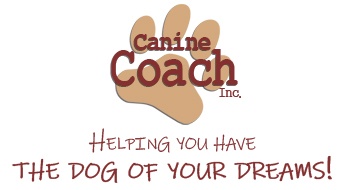Dog Parks – Part 3
We’re in the dog park, so now what?
Once you’ve entered the dog park, move quickly with your dog away from the gate area. Excitement and anxiety levels can be very high at the gate, especially if the area is crowded, causing spats between dogs. Try to keep his attention, and stay close to your dog, while directing him towards dogs you think have similar play styles. Hopefully you have taken the time before entering the park to determine who is there and assess the overall mood and feel of the park.
Once your dog has found a playmate, watch for balanced play between the dogs. If the dogs are rough housing, they should each take turns being on top. If playing chase, they should each take turns leading and following. Not all combinations of dogs will play well together. If you are not sure, separate the dogs, calm them down for a bit, and watch when you release them to see if they both want to resume the game. If one dog tries to leave, keep them separated and look for different playmates.
Some warning signals to watch for: excessive mounting, one dog relentlessly pestering another, or hard stares and stiff body posture between dogs. High speed chases games (especially with more than two dogs) should be interrupted and avoided, as these can easily trigger prey drive and change from play to dangerous predatory behavior in an instant. Also watch for pack behavior, with several dogs ganging up on another dog, especially with multiple dogs from the same household or dog park “regulars”.
Your goal should be to prevent play behaviors from escalating, so you must always stay close to your dog, monitor what is going on around you, and participate. If you sense tensions rising or play getting out of hand, encourage your dog, and anyone else around, to take a walk together. This will calm everyone’s emotions, dogs’ and peoples’ alike.
You should also be monitoring your dog’s attention and ability to respond to cues. It may be necessary to call him away from a situation to avoid conflict, so be sure your dog will listen to you should the need arise. Every few minutes ask your dog to come to you, or perform a simple task, such as sit. If he is responding well, release him to resume play.
If your dog is not readily paying attention to you, take a few minutes to practice some training. Move him to a distance far enough away from the action so he is able to pay attention to you and respond appropriately. Take care when using food or toys in the dog park, as you, the food, or the toys may become valuable resources for your dog, or others, to guard. Never feed someone else’s dog in the park, as you don’t know who may have food allergies, or resource guarding issues. Once your dog is responding well to you again, he may resume play, but continue to monitor his attention every few minutes or so.
I often observe people trying to chase their dogs down when it is time to leave the park. Often they must trick the dog, or enlist the aid of others to catch her. By calling your dog to you every few moments, then releasing her back to play, she learns that coming to you is only a brief, fun interlude in the play, rather than the end of the game.
My goal with these tips is to insure that your visits to the dog park are safe and fun for all. Still feeling unsure? Contact me at Linda@yourcaninecoach.com
